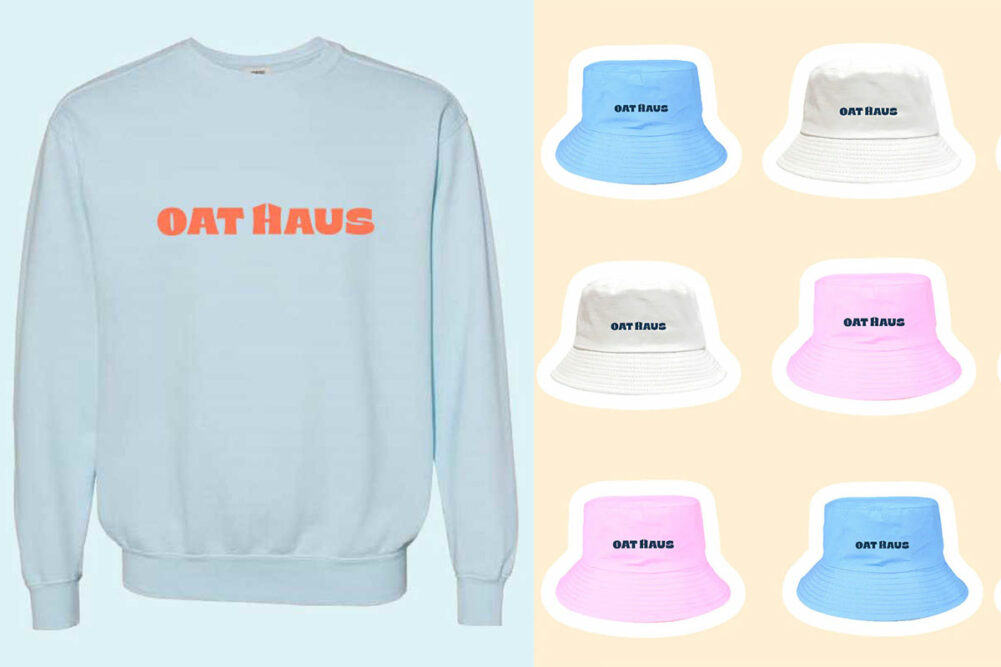CHICAGO — Consumers’ hunger for self-expression has led to an explosion in branded merchandise sales across every niche — especially in food and beverage. Wearing bold logos and thought-provoking statements allows people to express their beliefs and personalities. With its ability to build engagement around shared values, merchandise can start conversations, emphasize brand persona and, most importantly, drive sales. Promoting branded merchandise is an ideal marketing strategy for food businesses; however, careful execution is key to avoid derailing a brand’s hard-earned success.
Historically, branded merchandise was an afterthought used only for logo exposure, resulting in little impression and a graveyard of mismatched pens. Today, brands are pushing boundaries with fashionable, statement-making merchandise that’s driving product engagement. Displaying branded accessories can be a reflection of one’s identity; for example, carrying reusable totes may showcase a commitment to sustainability, while an organic labeled green juice touts a dedication to health. These products also are a creative outlet and voice that entrepreneurs can use to connect with consumers and humanize their brand.
Timing, investment and alignment of merchandise with a company’s values and sales goals are essential for success. Most brands start exploring this space after at least six months of operation, giving time for the core product to gain traction, prove the concept and demonstrate interest.
Emily Griffith, founder of Lil Bucks buckwheat snacks and toppings, “wanted to have enough of a base to give back to employees, partners and influencers.” It took two years to develop merchandise, but customers wanted more when brand ambassadors started wearing Lil Bucks attire during demos. Soon, cleverly branded “Lil Buck-et Hats” were spreading interest and sparking trial orders.
Versus paid advertisements and coupons, a thoughtful gift with purchase may be a more affordable and personal way to retain loyal customers. For Ali Bonar, co-founder and chief executive officer of Oat Haus and inventor of its granola butters, merchandise took off when she shifted from selling generic gear to offering creative gifts with purchases. Her clients proudly adopted the brand’s products and statements as their own, whether eating oatmeal with a gifted gold spoon or wearing trendy “Free the Drip” tank tops around town.
As Ms. Bonar learned, the products must complement the brand’s story.
“Storytelling on social media is key,” she said.
For example, as a sustainable company, Lil Bucks uses organic materials to avoid a mismatch with its mission or threaten its authenticity. Its new branded beach towels also sport QR codes linked to a direct checkout for Clusterbucks snacks. In this way, each complementary item has a defined investment, a clear purpose and a distribution plan — whether it’s an incentive (gift with purchase), a marketing campaign (contest giveaway) or a potential revenue driver. Compared to the expense of creating a new stock-keeping unit, a non-perishable gift may be a significantly more affordable and low-risk way to keep a brand fresh. Merchandise can fill gaps between product launches and promotions to help avoid stagnation and spark engagement.
Creating outside-the-box merchandise is often a collaborative effort. Ms. Bonar engaged her marketing team, interviewed manufacturers and scoured online sources to find quality goods that fit the bill.
“You are what you eat” has become a form of self-expression for consumers looking to connect with like-minded individuals and food brands. Promoting clever, bold and wearable merchandise can elevate a brand — and create an impression that persists far beyond the last tasty bite.
Natalie Shmulik is the chief strategy and incubation officer at ICNC and The Hatchery Chicago.





